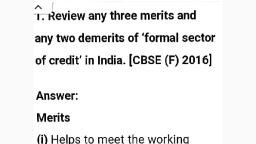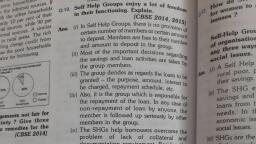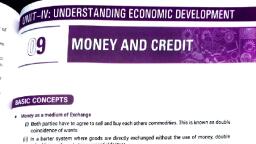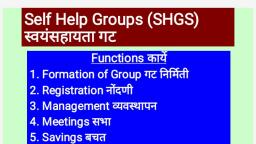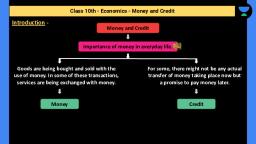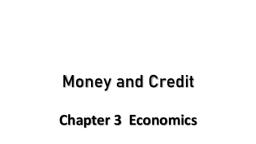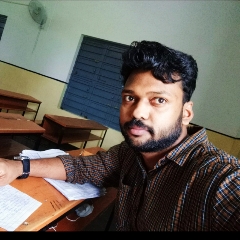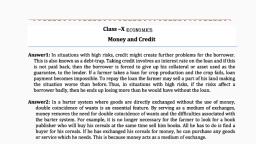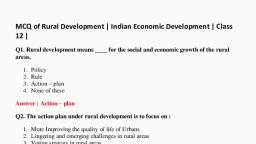Page 1 :
Orishti, Self Help Groups (SHGs), , Boriss, , , , as.comv'at into’, , , , What are SHGs?, , ® Self-Help Groups (SHGs) are informal associations of peaple who choose to come, together to find ways ta improve their living concitions., , * Itcan be defined as self governed, peer controlled information group of peaple with, similar socio-economic hackgraund and having 3 desire to collectively perfarm, common purpnse,, , ® Villages face numerous problems related to poverty, illiteracy, lack of skills, lack of, formal credit etc. These problems cannot be tackled at an individual level and need, collective efforts., , ® Thus SHG can become a vehicle of change for the poor and marginalized. SHG rely on, the notion of “Self Help" to encourage self-employment and poverty alleviation., , , , Functions, , * Itlooks to build the functional capacity of the poor and the marginalized in the fielc, of employment and income generating activities., , * Itresolves conflicts through collective lesdership and mutual discussion., , « It provides collateral free loan with terms decided by the group at the market driven, rates., , * Such groups work as a collective guarantee system for members wha propose ta, borrow from organised sources, The poor collect their savings and save it in banks. In, return they receive easy access to loans with a small rate of interest to start their, micro unit enterprise., , © Consequently, Self-Help Groups have emerged as the most effective mechanism for, delivery of microfinance services to the poor,, , , , Need for SHGs, , * One ofthe reasons for rural poverty in our country is law access to credit and financial
Page 2 :
services., , e A Committee constituted under the chairmanship of Dr. C. Rangarajan to prepare a, comprehensive report on ‘Financial Inclusion in the Country’ identified four major, reasons for lack of financial inclusion:, , © Inability to provide collateral security,, , e Poor credit absorption capacity,, , © Inadequate reach of the institutions, and, © Weak community network,, , « The existence of sound community networks in villages is increasingly being, recognised as one of the most important elements of credit linkage in the rural areas., , ¢ They help in accessing credit to the poor and thus, play a critical role in poverty, alleviation., , © They also help to build social capital among the poor, especially women. This, empowers women and gives them greater voice in the society., , ¢ Financial independence through self-employment has many externalities such as, improved literacy levels, better health care and even better family planning., , Genesis of SHG, , « The Genesis of SHG in India can be traced to formation of Self-Employed Women's, Association (SEWA) in 1970., , ¢ The SHG Bank Linkage Project launched by NABARD in 1992 has blossomed into the, world’s largest microfinance project., , ¢ NABARD alongwith RBI permitted SHGs to have a savings account in banks from the, year of 1993. This action gave a considerable boost to the SHG movement and paved, the way for the SHG-Bank linkage program., , ¢ In 1999, Government of India, introduced Swarn Jayanti Gram Swarozgar Yojana, (SGSY) to promote self-employment in rural areas through formation and skilling of, SHGs., , « The programme evolved as a national movement in 2011 and became National Rural, Livelincods Mission (NRLM) - world's largest poverty alleviation programme., , © Today, State Rural Livelihood Missions (SRLMs) are operational in 29 states and 5 UTs, (except Delhi and Chandigarh)., , e NRLM facilitated universal access to the affordable cost-effective reliable financial, services to the poor like financial literacy, bank account, savings, credit, insurance,, remittance, pension and counselling on financial services., , Benefits of SHGs, , ¢ Social integrity - SHGs encourages collective efforts for combating practices like, dowry, alcoholism etc., ¢ Gender Equity - SHGs empowers women and inculcates leadership skill among them,, , 25
Page 3 :
Empowered women participate more actively in gram sabha and elections., , e There is evidence in this country as well as elsewhere that formation of Self-Help, Groups has a multiplier effect in improving women's status in society as well as in the, family leading to improvement in their socio-economic condition and also enhances, their self-esteem., , ¢ Pressure Groups - their participation in governance process enables them to, highlight issues such as dowry, alcoholism, the menace of open defecation, primary, health care etc and impact policy decision., , « Voice to marginalized section - Most of the beneficiaries of government schemes, have been from weaker and marginalized communities and hence their participation, through SHGs ensures social justice., , ¢ Financial Inclusion - Priority Sector Lending norms and assurance of returns, incentivize banks to lend to SHGs. The SHG-Bank linkage programme pioneered by, NABARD has made access to credit easier and reduced the dependence on traditional, money lenders and other non-institutional sources., , « Improving efficiency of government schemes and reducing corruption through, social audits., , ¢ Alternate source of employment - it eases dependency on agriculture by providing, support in setting up micro-enterprises e.g. personalised business ventures like, tailoring, grocery, and tool repair shops., , « Changes In Consumption Pattern - It has enabled the participating households to, spend more on education, food and health than non-client households., , « Impact on Housing & Health - The financial inclusion attained through SHGs has led, to reduced child mortality, improved maternal health and the ability of the poor to, combat disease through better nutrition, housing and health - especially among, women and children., , ¢ Banking literacy - It encourages and motivates its members to save and act as a, conduit for formal banking services to reach them,, , Opportunities, , © SHGs often appear to be instrumental in rural poverty alleviation., , ¢ Economic empowerment through SHGs, provides women the confidence for, participation in decision making affairs at the household-level as well as at the, community-level., , e Un-utilised and underutilised resources of the community can be mobilised effectively, under different SHG-initiatives., , e Leaders and members of successful SHGs bear the potentiality to act as resource, persons for different community developmental initiatives., , Active involvement in different SHG-initiatives helps members to grow leadershipskills, Evidences also show that often women SHG leaders are chosen as potential, , candidates for Panchayat Pradhans or representatives to Panchayati Raj Institution, MS
Page 4 :
(PRI)., , Weaknesses of SHGs, , ¢ Members of a group do not come necessarily from the poorest families., « Though there has been social empowerment of the poor, the economic gain to bring, , about a qualitative change in their life has not been satisfactory., , Many of the activities undertaken by the SHGs are still based on primitive skills related, mostly to primary sector enterprises. With poor value addition per worker and, prevalence of subsistence level wages, such activities often do not lead to any, substantial increase in the income of group members., , There is a lack of qualified resource personnel in the rural areas who could help in skill, upgradation or acquisition of new skills by group members, Further, institutional, mechanisms for capacity building and skill training have been lacking., , ¢ Poor accounting practices and incidents of misappropriation of funds., e Lack of resources and means to market their goods., , SHGs are heavily dependent on their promoter NGOs and government agencies. The, withdrawal of support often leads to their callapse., , Challenges, , Lack of knowledge and proper orientation among SHG-members to take up suitable, and profitable livelihood options,, , Patriarchal mindset - primitive thinking and social obligations discourages women, from participating in SHGs thus limiting their economic avenues., , Lack of rural banking facilities - There are about 1.2 lakh bank branches and over 6, lakh villages. Moreover, many public sector banks and micro-finance institutions, are unwilling to provide financial services to the poor as the cost of servicing, remains high., , Sustainability and the quality of operations of the SHGs have been a matter of, considerable debate., , No Security - The SHGs work on mutual trust and confidence of the members. The, deposits of the SHGs are not secured or safe, , Only a minority of the Self-Help Groups are able to raise themselves from a level of, micro-finance to that of micro-entrepreneurship., , Measures to Make SHGs Effective, , The Government should play the role of a facilitator and promoter, create a, supportive environment for the growth and development of the SHG movement., Expanding SHG Movement to Credit Deficient Areas of the Country - such as Madhya, Pradesh, Rajasthan, States of the North-East., , 45
Page 5 :
¢ Rapid expansion of financial infrastructure (including that of NABARD) and by, adopting extensive IT enabled communication and capacity building measures in, these States., , * Extension of Self-Help Groups to Urban/Peri-Urban Areas - efforts should be made, to increase income generation abilities of the urban poor as there has been a rapid, rise in urbanisation and many people remain financially excluded., , ¢ Positive Attitude - Government functionaries should treat the poor and marginalized, as viable and responsible customers and as possible entrepreneurs., , ¢ Monitoring - Need to establish a separate SHG monitoring cell in every state. The cell, should have direct links with district and block level monitoring system. The cell, should collect both quantitative and qualitative information., , « Need Based Approach - Commercial Banks and NABARD in collaboration with the, State Government need to continuously innovate and design new financial products, for these groups., , Case studies, , * Kudumbashree in Kerala, It was launched in Kerala in 1998 to wipe out absolute poverty through, community action. It is the largest women empowering project in the country. It, has three components i.e., microcredit, entrepreneurship and, empowerment. It has three tier structure - neighborhood groups (SHG), area, development society (15-20 SHGs) and Community development society, (federation of all groups). Kudumbashree is a government agency that has a, budget and staff paid by the government. The three tiers are also managed by, unpaid volunteers., , ¢ Mahila Arthik Vikas Mahamandal (MAVIM) in Maharashtra, SHGs in Maharashtra were unable to cope with growing volume and financial, transactions and needed professional help. Community managed resource, centre (CMRC) under MAVIM was launched to provide financial and livelihood, services to SHGs. CMRC is self-sustaining and provides need-based services,, , B5

































